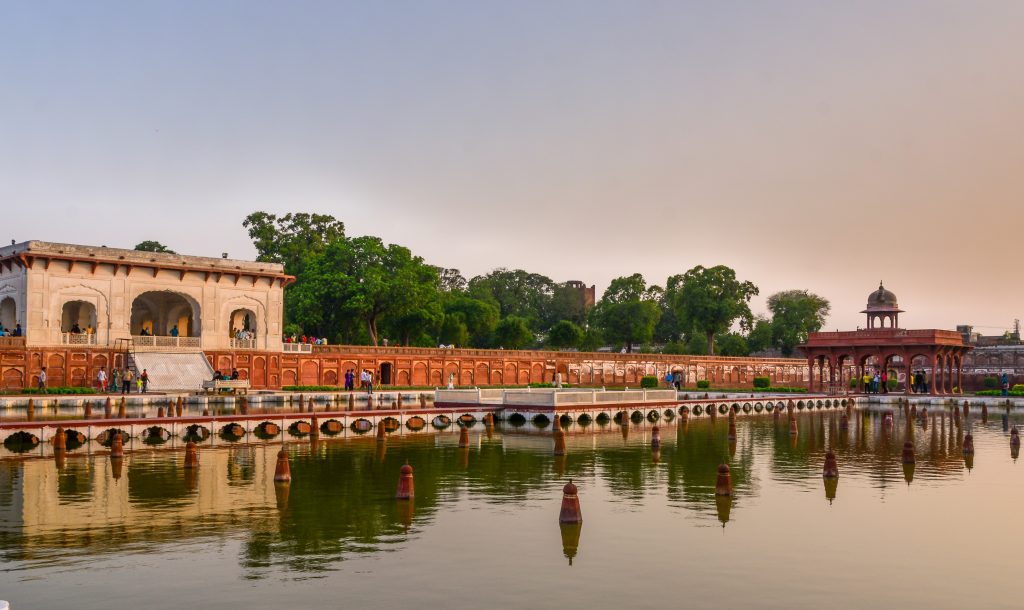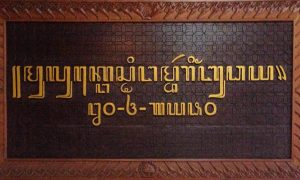In previous articles, I looked at a number of textual traditions from Southeast Asia that have strong connections to the Indian Ocean world, while also exhibiting distinctively local outlooks: the Javanese chronogram tradition, and the works of the Malay Sufi poet Hamzah of Barus.
In this article, I examine a historical text written in northern Sumatra in the mid-17th century, which illustrates some of the complexities of cultural influence at global and local scales. My aim is to illustrate a concrete model for how these cultural factors interacted to shape the way that history was written. I’m interested in the question: what did it mean to write history in the Indian Ocean world?
The Garden of Kings
The text is called The Garden of Kings. Its full title in Arabic is Bustan al-salatin fi dhikr al-awwalin wa ‘l-akhirin (The Garden of Kings on the recollection of the past and the future). It is a 7-volume work commissioned by Sultan Iskandar Thani, the ruler of Aceh between 1637 and 1641. It belongs to a genre called “Mirror for Princes”, a term for any sort of writing whose primary aim is to edify and educate a ruler.
The author of The Garden of Kings was Nur al-Din al-Raniri, a Gujarati-born Muslim of Hadrami descent who had migrated to Aceh in 1637. Raniri briefly served as the leading cleric of the Sultan’s court, in which capacity he composed this text. One of the better-known incidents during Raniri’s tenure was his campaign to eliminate the influence of the wahdat al-wujud doctrine, which he considered heretical. Raniri therefore set himself against the theological legacy left in the preceding decades by Hamzah and by the previous shaykh at the Acehnese court, Syams al-Din.
For a historical point of view, the most useful part of The Garden of Kings is the second volume. It contains a universal history, which is a catch-all term for historical works that attempt to integrate many different historical narratives into a complete history of the world.
Raniri’s history begins with the stories of the Prophets as told in the Qur’an and the Hadith, as is standard for universal histories written in a Muslim context. The Garden of Kings, Vol. 2 then goes on to dedicate subsequent chapters to the histories of various kingdoms and dynasties, both pre- and post-Islamic.
| Topic | Chapter |
| Prophets | 1 |
| Persia | 2 |
| Greece, Rome, Byzantium | 3 |
| Egypt | 4 |
| Yemen | 5 |
| Najd | 6 |
| Hijaz | 7 |
| Rashidun Caliphate | 8 |
| Umayyad Caliphate | 9 |
| Abbasid Caliphate | 10 |
| Indian Sultanates | 11 |
| Malay Kingdoms | 12 |
| Aceh Sultanate | 13 |
The form of universal history
Raniri’s universal history may have been structured in this way in order to show how the Malay-speakers, especially the Acehnese who were his patrons, represented the culmination of Islamic history. Scholars such as Jelani Harun have noted this teleological aspect of the text, and argued that the historian aimed to “connect the Malay people … and the peoples of the world as a whole”.
The text uses extensive genealogical networks to tie the various dynasties together. For example, the Persian dynasty described in chapter 2 and the Malay dynasties of chapter 12 are connected by their common descent from Iskandar Zulkarnain (a legendary figure from the Qur’an based on Alexander the Great). Raniri seems to have selected those histories that could plausibly be linked to the eventual emergence of Islamic kingdoms in the Malay world, such as Melaka, Pahang, and ultimately, Aceh.
The chapter structure of The Garden of Kings, Vol. 2 suggests that it is a combination of very different kinds of source material. Certain chapters use the Hijrah dating system common to Arabic-language historiography; for example, “Shaykh Syams al-Din al-Samatrani passed away on Monday, the 12th day of Rejab, in the year 1039 of the Hijrah era” (equivalent to 25 February 1630). Other chapters use only the age of individuals to build a chronology; for example, “The Flood occurred when the Prophet Noah was 1200 years old”. Still other chapters have no dating whatsoever, but simply categorise events into the periods of reign of different rulers.
Raniri’s sources
We find that Raniri rarely specifies what his sources are, but often gives the vague disclaimer: “according to those who have preserved this history”. This shows a divergence from the classical Arabic tradition of historical writing, which often makes use of chains of transmission (isnad) to verify different accounts of the past. Because of his lack of explicit citation, it would take some committed detective work to scour the historical literatures in Arabic, Persian and Indian languages, identifying the original accounts that Raniri has drawn upon, if they still exist.
One important source that Raniri does cite by name is The Chains of Kings (called Sulalat al-Salatin in Arabic but better known by an alternative Malay title Sejarah Melayu). This is a Malay text that records the background and history of the Melaka court and its successor states in Johor and Pahang. It was compiled in Johor in 1612 from older materials, under the direction of the chief minister Tun Sri Lanang.
Raniri’s chapter 12 is a summary of The Chains of Kings, with some extra genealogical data at the beginning and end. He does not question the validity or trustworthiness of this Malay source, but simply integrates its main points into his own narrative. Raniri’s uncritical handling of this source might lead us to speculate that he was similarly credulous of his other sources.
We can see that at a few points in his text, Raniri has attempted to synchronise the different narratives by finding a genealogical link or establishing a coincidence of events. For example, he links the end of chapter 3 (Byzantine history) to the middle of chapter 8 (the Prophet Muhammad’s biography) with this statement: “When Heraclius had been on the throne for 13 years, the Prophet Muhammad moved from Mecca to Medina.”
The challenge of interpretation
I argue that The Garden of Kings, Vol. 2 is a composite text of heterogeneous parts that retain their individual styles and structures. The text was produced by a specific interaction between global textual norms and local textual conditions.
The global norms that Raniri tried to adhere to were those of the Islamic universal history genre. He drew on diverse sources to integrate the histories of regions from all over the Indian Ocean world, in order to tell the story of the world’s Islamic community. A side effect of Raniri’s inclusive approach was that he tended to avoid critical judgement of his sources, which makes it hard to discern his original contribution to our knowledge of history.
The diversity of local textual conditions shaped the heterogeneous structure of The Garden of Kings, Vol. 2. Different sorts of historical records were found in the different regions he studied: some used the Hijrah era, while other used genealogies to organise historical events. This led to Raniri’s final product looking like a chronological hodge-podge, with only the most tenuous links connecting the various timelines together.
These features don’t reduce the value of Raniri’s work. Rather, they mean that we need to take special care and put more effort into reading the historical sources of the Indian Ocean world. Our first step is to properly situate The Garden of Kings in the textual networks of the region, in order to better understand what sources Raniri may have used, and to what extent his originality as a historian comes into play. It’s only through this kind of detailed comparison of texts that we can answer the question of what it meant to write history in the Indian Ocean world in this period.
 Facebook
Facebook  Twitter
Twitter  Soundcloud
Soundcloud  Youtube
Youtube  Rss
Rss 


